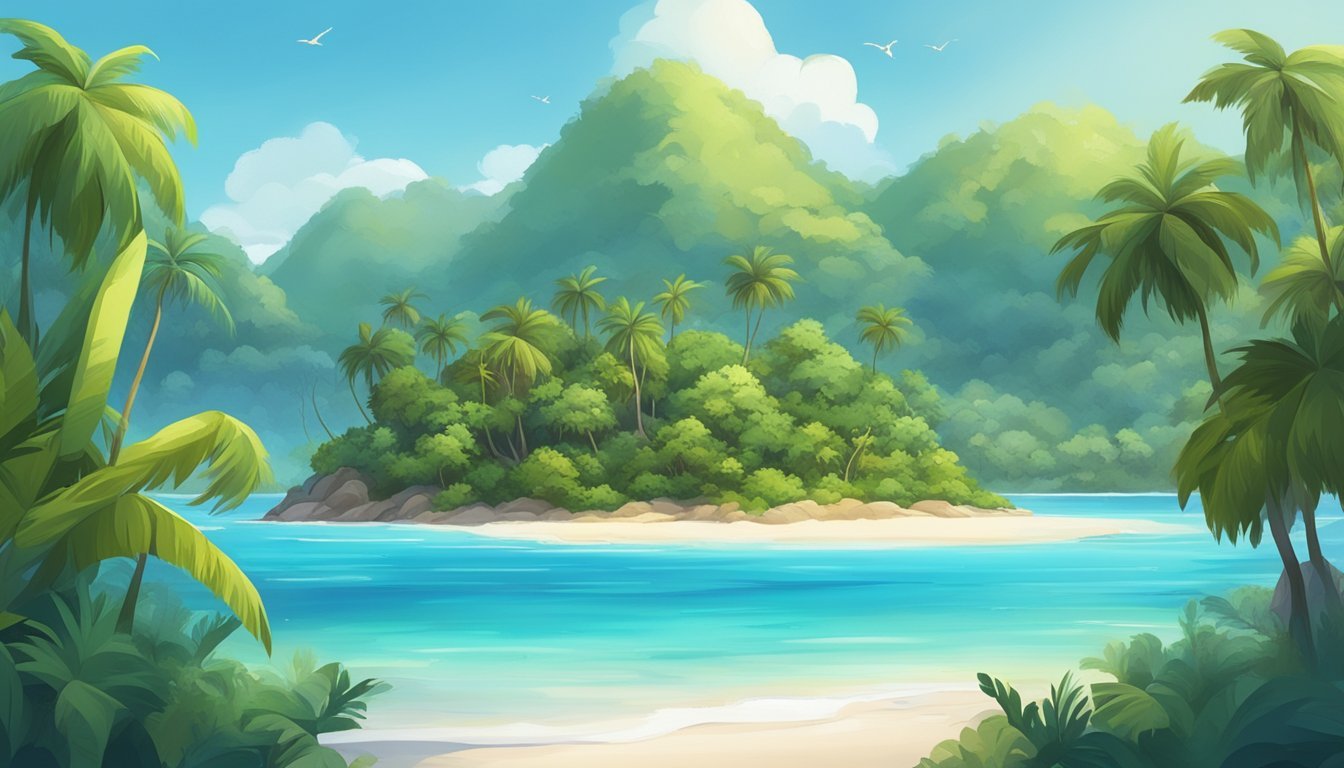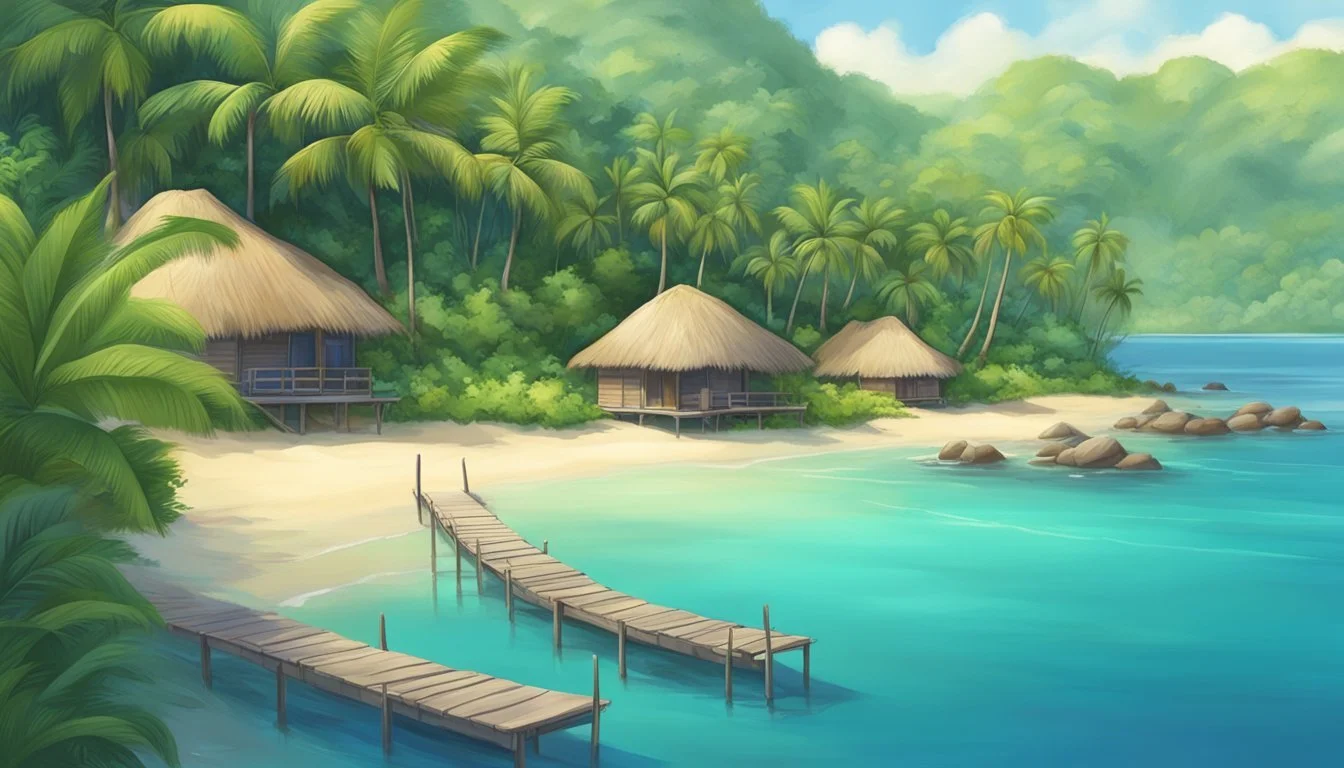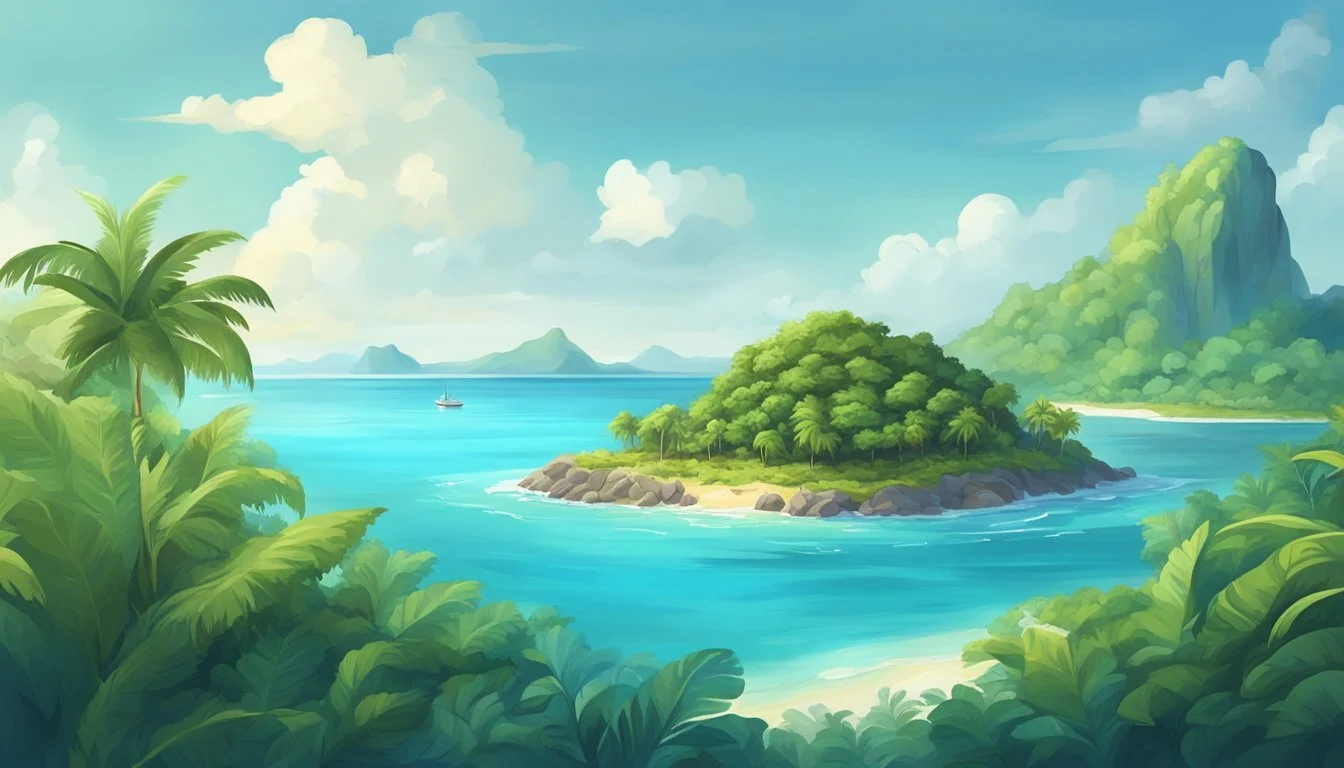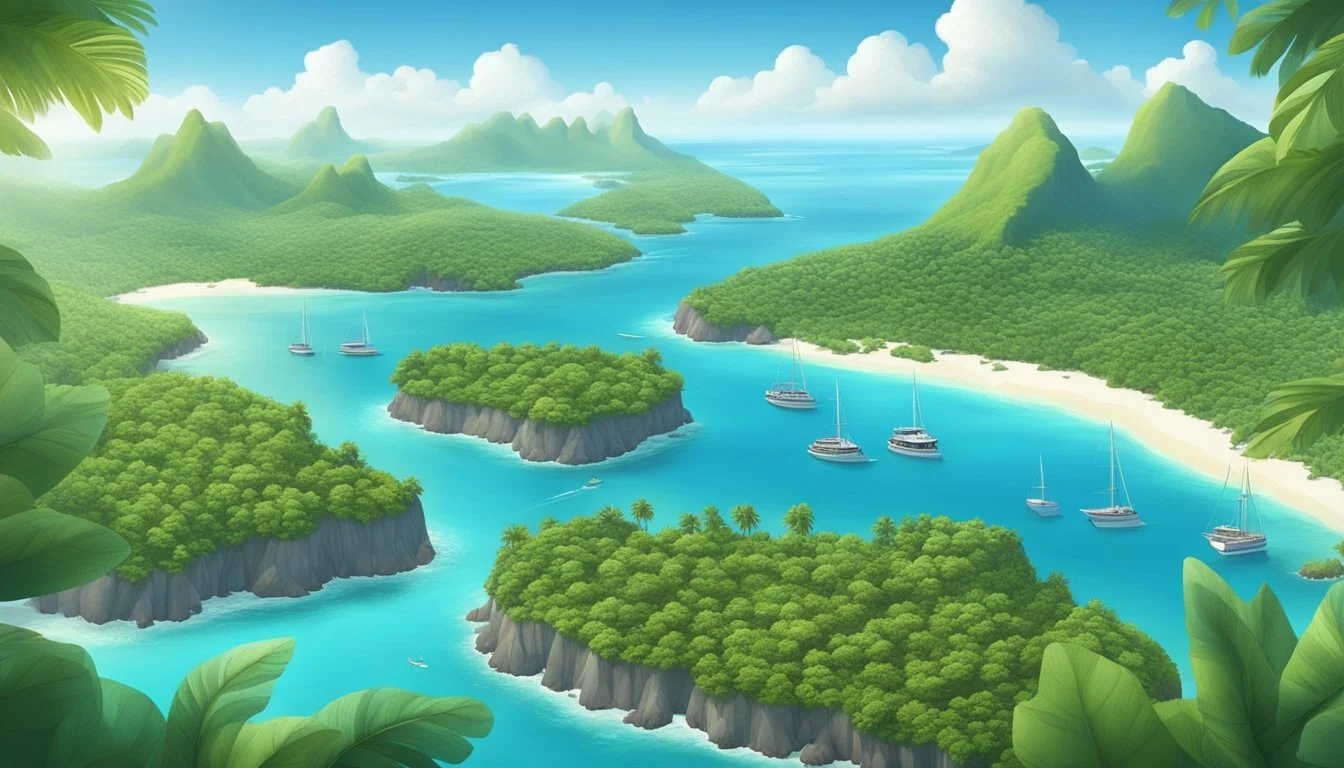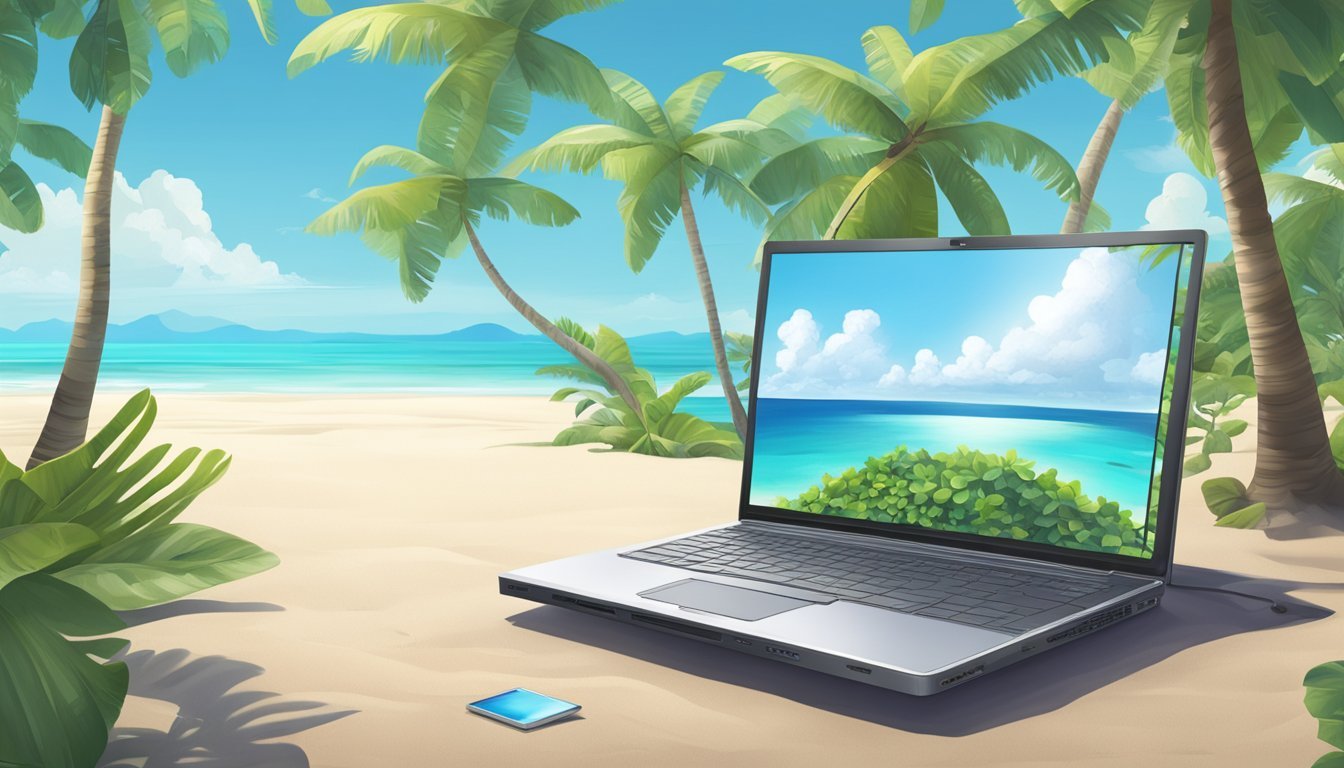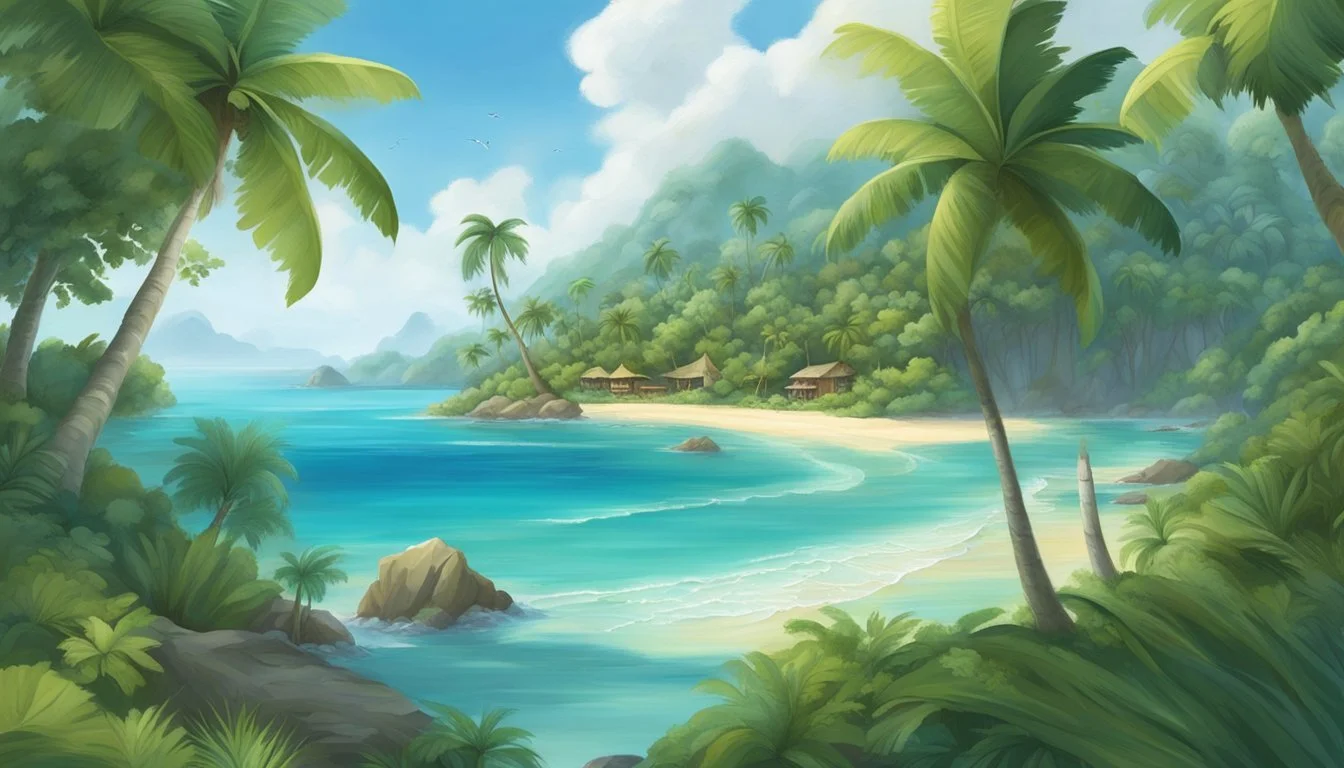Free Land on Islands
Discover Remote Living Opportunities
Is the idea of trading city life for a tranquil, remote island appealing? Several islands worldwide are offering free land to attract new residents. This unique opportunity allows for a fresh start and an escape from crowded urban environments.
One example is Pitcairn Island, the least populated nation on earth, with less than 60 residents. To grow its population, the island provides free land and permanent residency to newcomers who can sustain themselves. Imagine living in a small, tightly-knit community with the chance of owning your own piece of an island paradise.
Similarly, Cape Breton Island in Canada offers free land to individuals willing to work on farms for more than five years. Nestled in Nova Scotia, this island seeks to rejuvenate its population through incentives, creating a promising future for new residents who desire a change of pace and lifestyle.
The Allure of Island Living
Island living offers a unique blend of natural beauty, tranquility, and a slower pace of life. From remote tropical paradises to islands closer to the mainland, each location provides distinct opportunities and experiences.
Understanding the Island Lifestyle
Island living is a deliberate choice to embrace simplicity and focus on what matters most. Individuals often seek out islands for their tranquil surroundings and the opportunity to forge a deeper connection with nature. This lifestyle promotes a slowed-down pace, away from the hustle of mainland cities.
Settling on an island often means engaging more closely with the environment, both for recreation and sustenance. Many islands support a culture of self-sufficiency, where agriculture and fishing are common.
Diverse Island Environments
Islands come in a wide variety, each offering unique landscapes and ecosystems. Tropical islands, with their sandy beaches and lush vegetation, are popular for tourists and those seeking an idyllic environment.
On the flip side, islands located in more temperate climates can offer rugged coastlines and dramatic geological features. These environments often attract adventurous spirits looking for natural beauty beyond the typical sun-and-sand image.
Remote Islands Versus Mainland Proximity
The distance of an island from the mainland significantly affects the experience. Remote islands like those in the South Pacific provide escape and solitude, often at the cost of limited accessibility and amenities. Population sizes on these islands tend to be small, contributing to a tight-knit community but also posing challenges for economic development and healthcare services.
On the other hand, islands closer to the mainland, such as those off the coast of North America or Europe, offer a balance between seclusion and convenience. They provide easier access to mainland resources while still retaining their distinct island charm.
Exploring Free Land Opportunities
Several remote islands around the world are offering free land incentives to encourage re-population and sustainable living. These opportunities often come with specific requirements and conditions that interested individuals must meet.
Global Overview of Free Land Incentives
Cape Breton Island in Nova Scotia, Canada, offers free land as part of its re-population efforts. Those who work on the farm for over five years are eligible for a 2-acre plot. This initiative focuses on sustainable agriculture and long-term community development.
Pitcairn Island, one of the most remote inhabited islands, welcomes new residents by offering free land. The island aims to boost its population and develop a self-sustaining economy. New inhabitants can engage in various communal activities to establish their presence.
Requirements and Conditions for Ownership
Programs offering free land usually come with specific conditions that participants must adhere to. On Cape Breton Island, applicants must commit to working on the local farm for five years. This ensures that the land is used productively and supports the local economy.
Pitcairn Island requires potential residents to contribute to the community actively. Prospective settlers might need to engage in communal projects or demonstrate a willingness to integrate into island life. These conditions help sustain the island's infrastructure and promote social cohesion.
Minimalist and sustainable living practices are often encouraged to preserve the islands' natural beauty. Applicants may need to present plans showing their intent to build eco-friendly dwellings. Each program's specific requirements ensure that new landowners contribute positively to the community.
International Destinations for Free Land
Numerous countries around the world are offering free land to attract new residents. These destinations often provide this incentive to bolster their communities and stimulate economic growth. Below, explore several key regions offering free land and what makes each unique.
European Retreats: Ireland and Spain
Ireland and Spain provide intriguing options within mainland Europe. Ireland is particularly noteworthy for its rural revitalization programs aimed at repopulating small towns. Some initiatives in Counties like Leitrim and Roscommon include offering land to those willing to settle and develop properties there.
Spain has similar programs primarily aimed at attracting individuals to depopulated areas. Regions such as Galicia and Andalucia might offer land to those ready to start agricultural ventures or small businesses. These initiatives are designed to breathe new life into declining rural communities while offering newcomers a peaceful lifestyle.
The Caribbean Experience: Dominica and The Bahamas
In the Caribbean, islands like Dominica and The Bahamas stand out. Dominica is known for its natural beauty and focus on sustainable living. The island's government has occasionally offered land in exchange for commitments to build eco-friendly homes and contribute to local tourism or agriculture.
The Bahamas, particularly Long Island, offers another attractive option. Some areas have initiatives granting land to those willing to invest in local businesses or farming activities. This is part of broader efforts to diversify the economy and reduce dependence on tourism alone.
Central American Hideaways: Belize and Panama
Tropical Central American countries like Belize and Panama are also notable. Belize often attracts expats with offers of land in exchange for various forms of investment in local communities. Programs might be geared towards those interested in agriculture, particularly in fertile areas near San Pedro and the Belize Barrier Reef.
Panama has launched initiatives aimed at drawing foreign investment by granting land in underpopulated regions. These offers are usually linked to agricultural development or eco-tourism projects. The country's strategic location and favorable climate make it an appealing choice for those seeking a new start in a warm, tropical environment.
Asian Havens: Malaysia and Thailand
Malaysia and Thailand, located in Southeast Asia, present unique opportunities. Malaysia focuses on rural development programs where free land is offered to those ready to engage in agricultural activities. Regions such as Sabah are especially active in promoting these initiatives.
Thailand has similar land grant programs, particularly aimed at revitalizing less populated areas. Northern provinces like Chiang Rai might offer land to those willing to commit to farming or eco-tourism projects. The goal is to stimulate local economies and preserve cultural heritage while fostering sustainable development.
These destinations provide promising opportunities for those seeking new beginnings through the incentive of free land.
Lifestyle and Culture on Remote Islands
Remote islands often boast close-knit communities where social dynamics and local customs provide a unique experience for residents and visitors alike. These places may attract those looking to retire, live as a global citizen, or tourists seeking genuine cultural integration.
Community and Social Dynamics
In many remote island communities, relationships are paramount. With smaller populations, such as the 50 residents on Pitcairn Island, everyone knows each other. This creates a strong support system where residents often cooperate in daily tasks and community projects. Newcomers and migrants are usually welcomed, but adapting to local ways might be essential for smooth integration.
Villages are the central hubs of activity. Places like Adamstown on Pitcairn Island or Hugh Town in the Isles of Scilly function as focal points where people gather for events, markets, and socializing. Residents often engage in communal activities such as farming, fishing, and craftsmanship, contributing to the local economy and fostering a cooperative spirit. For retirees, this environment can offer a sense of belonging and purpose.
Local Customs and Traditions
Local customs and traditions heavily influence life on these islands. For instance, the Faroe Islands celebrate "Ólavsøka," a national holiday replete with traditional music, dance, and games. Such events are not merely festive but pivotal in maintaining cultural identity and continuity. These traditions are often passed down through generations, helping to sustain the island's unique heritage.
Tourists who visit these islands can expect to participate in or observe these traditions, offering an intimate glimpse into the island's cultural fabric. For global citizens or those looking to relocate, embracing these customs can be a rewarding way to integrate and understand the local way of life. Whether it’s through festivals, daily rituals, or communal gatherings, the local traditions provide a rich, immersive experience.
| Entities | Description |
|----------------|-------------|
| Villages | Central hubs of activity and social interaction |
| Retirement | Offers a close-knit and purposeful community life |
| Migrant | Newcomers often integrate into the local lifestyle |
| Relocate | Embracing local customs can ease cultural integration |
| Global Citizen | Offers a chance for true cultural immersion |
| Cultural Integration | Essential for adapting to island life |
| Tourists | Can participate in local traditions and festivities |Economic Considerations
Exploring the economic factors surrounding free land offers on remote islands involves understanding the cost of living, financial planning, and potential economic benefits available for settlers. These aspects critically determine the feasibility and attractiveness of such opportunities.
Cost of Living and Financial Planning
When considering relocation to a remote island, it's crucial to assess the cost of living. Essentials such as groceries, utilities, and healthcare might be more expensive due to limited access and transportation costs. Moreover, financial planning should account for initial relocation expenses, housing construction, and long-term sustainability.
Investment opportunities in these areas can be limited. Infrastructure development, such as internet connectivity and reliable power sources, may require personal investment.
Budgeting accurately is essential, especially when looking at initial vs. ongoing costs. Here’s a quick summary of potentially higher expenses:
Groceries and supplies: Imported goods can be costly.
Utilities: Limited resource availability.
Healthcare: Few facilities might mean higher expenses or travel costs for care.
Economic Benefit Programs for Settlers
Many islands offer economic benefit programs to attract settlers. Pitcairn Island, for example, provides free land and permanent residency to newcomers. These incentives aim to boost economic development and stabilize the population.
Other economic incentives can include tax breaks, grants for starting businesses, or subsidies for housing. Programs vary widely by location and should be thoroughly researched.
Some tangible benefits might be:
Free land allotments
Tax incentives
Grants and subsidies
In some scenarios, local authorities might also support settlers with marketing assistance for local businesses or aid in securing investment opportunities, thus enhancing the overall economic appeal of moving to such remote islands.
Real Estate and Development
Securing property on remote islands involves careful research, adherence to building regulations, and a commitment to sustainable practices. Each location offers unique challenges and opportunities.
Finding the Right Property
Choosing the right property on offshore islands such as Penang, Malta, or Dominica requires thorough investigation. Prospective buyers need to consider factors like proximity to essential services, climate, and the community.
In some regions, like Cape Breton in Canada and Pitcairn Island, free land may be available under certain conditions, such as long-term residency or agricultural work. Rental options also serve as an alternative for those hesitant about permanent relocation.
Building and Development Regulations
Adhering to local building and development regulations is crucial. Each island will have its own set of zoning laws, environmental protections, and construction standards. In Malta, construction must often align with Mediterranean architectural styles and coastal safeguarding efforts.
Indonesia, known for its rich natural landscapes, imposes strict rules to preserve its environment. Builders must obtain permits and sometimes work with local architects to meet these standards. Understanding these regulations before purchasing can prevent legal hurdles and protect investments.
Sustainable Living and Eco-Friendly Practices
Living sustainably on remote islands involves integrating eco-friendly practices into daily life. Islands like Dominica and Indonesia promote sustainable development, encouraging the use of renewable energy sources and local materials.
Residents can participate in efforts to maintain biodiversity and reduce carbon footprints. Composting, rainwater harvesting, and solar power are common practices. Sustainable building designs, incorporating natural ventilation and insulation, are also increasingly popular, aiding in environmental conservation and reducing utility costs.
Navigating Legal and Immigration Issues
Migrating to remote islands with free land offers a unique opportunity but comes with several legal and immigration challenges. Key considerations include understanding visa requirements, residency conditions, and land ownership laws.
Visa Requirements and Residency
Relocating to an island often requires specific visa types and meets various residency conditions. For instance, Pitcairn Island offers free land along with permanent residency, provided migrants can support themselves long-term. Other islands may have different requirements, such as proof of financial stability, or sponsorship by local residents.
Temporary visas may suffice initially, but long-term residence usually involves more stringent requirements. Legal procedures can vary, with some countries needing detailed documentation and others focusing on the applicant's potential contribution to the community.
Land Ownership Laws
Land ownership laws are critical for anyone considering moving to these remote locations. Some islands, like Pitcairn, offer free land, but conditions apply, such as demonstrating the ability to develop the land sustainably. Ownership rights can vary, with some regions permitting only leases rather than outright purchase.
Understanding local legal procedures and immigration policy can also impact land ownership. Some nations might have restrictions on foreign ownership or require joint ventures with local entities. Each island's specific set of laws must be carefully reviewed to ensure compliance and secure legal ownership.
Remote Work and Connectivity
Remote work on islands has become increasingly viable due to advancements in internet access and tech infrastructure. Additionally, emerging career opportunities and remote work trends are making these destinations attractive to digital nomads seeking a unique work-life balance.
Internet Access and Tech Infrastructure
Stable, high-speed internet is the cornerstone of remote work. Islands like the Cayman Islands and Curaçao offer robust infrastructure with reliable internet connectivity. For instance, Curaçao is known for its affordability combined with above-average internet speeds, critical for seamless virtual meetings and data transfers.
Digital nomads on these islands benefit from modern amenities, like co-working spaces and tech support services, that enhance productivity. Infrastructure is improving across many islands, with efforts to bolster broadband coverage and increase network reliability.
Career Opportunities and Remote Work Trends
With the rise of digital nomad visas, several islands now cater specifically to remote workers. For example, the Cayman Islands and Dominica have introduced such visas, facilitating extended stays for professionals. This development supports a trend of integrating work with travel.
Career opportunities abound in sectors like IT, marketing, and consultancy, allowing professionals to maintain a global presence while enjoying island life. The flexibility of remote jobs makes islands financially and personally attractive, blending work responsibilities with leisure activities seamlessly. This trend aligns with the growing preference for remote and flexible work arrangements worldwide.
Leisure and Adventure
Remote islands offering free land aren't just ideal for a tranquil life; they also provide numerous opportunities for thrilling adventures and leisurely activities.
Water Sports and Recreation
Diving and Snorkeling: Many remote islands, including spots like Cape Breton in Canada, boast vibrant underwater ecosystems. Clear waters present an ideal environment for diving and snorkeling enthusiasts, revealing colorful coral reefs and diverse marine life. These activities offer both a recreational escape and a chance to explore the ocean's depths.
Boating and Fishing: Fishing enthusiasts can enjoy ample opportunities, from deep-sea fishing to tranquil lakes and rivers. Boating is another popular pastime, whether it's for sport, leisure, or exploring neighboring islets. Islands such as those in the Caribbean often provide excellent conditions for sailing, kayaking, and canoeing as well.
Exploring Natural Landscapes
Hiking and Trekking: Islands like Rapa Nui (Easter Island) feature rugged terrains and iconic archaeological sites, ideal for hiking adventures. Trails often lead to significant historical landmarks, untouched forests, and panoramic viewpoints, offering both exercise and a deep connection with nature.
Wildlife Observation: Remote islands can be sanctuaries for diverse wildlife. Rare bird species, unique mammals, and unspoiled natural habitats are commonplace. These settings are perfect for eco-tourists and nature lovers who wish to observe animals in their native environments. Guided tours can enhance the experience by providing insights and ensuring minimal impact on local ecosystems.
Environmental Considerations
In exploring opportunities for remote living with free land on islands, it becomes critical to address environmental factors such as climate challenges and conservation efforts that directly impact island ecosystems and sustainability.
Climate Challenges and Adaptation
Islands often face significant climate-related challenges. Sea-level rise poses a risk of inundation for low-lying areas, which could make some islands uninhabitable. Furthermore, rising temperatures and increased storm frequency exacerbate erosion and threaten freshwater supplies.
Adaptation strategies are essential. These include constructing sea walls to mitigate coastal erosion and developing sustainable water management systems. Community-led initiatives often focus on enhancing climate resilience through traditional practices aligned with modern technology. Policies promoting renewable energy sources help reduce the carbon footprint and support long-term sustainability.
Conservation Efforts and Biodiversity
Island ecosystems are unique and often contain biodiversity hotspots. Conservation efforts aim to protect these rich habitats from environmental degradation and invasive species, which can threaten indigenous flora and fauna.
Marine protected areas (MPAs) are established to conserve aquatic ecosystems, and reforestation projects work to restore native vegetation. Education and community participation are pivotal in conservation. Residents play an active role in initiatives such as wildlife monitoring and habitat restoration, ensuring ecosystems remain resilient and vibrant.
Effective conservation also involves balancing human development with the environment. Sustainable practices and policies are implemented to minimize adverse impacts on biodiversity, supporting healthy ecosystems that are essential for the islands' ecological and economic well-being.


